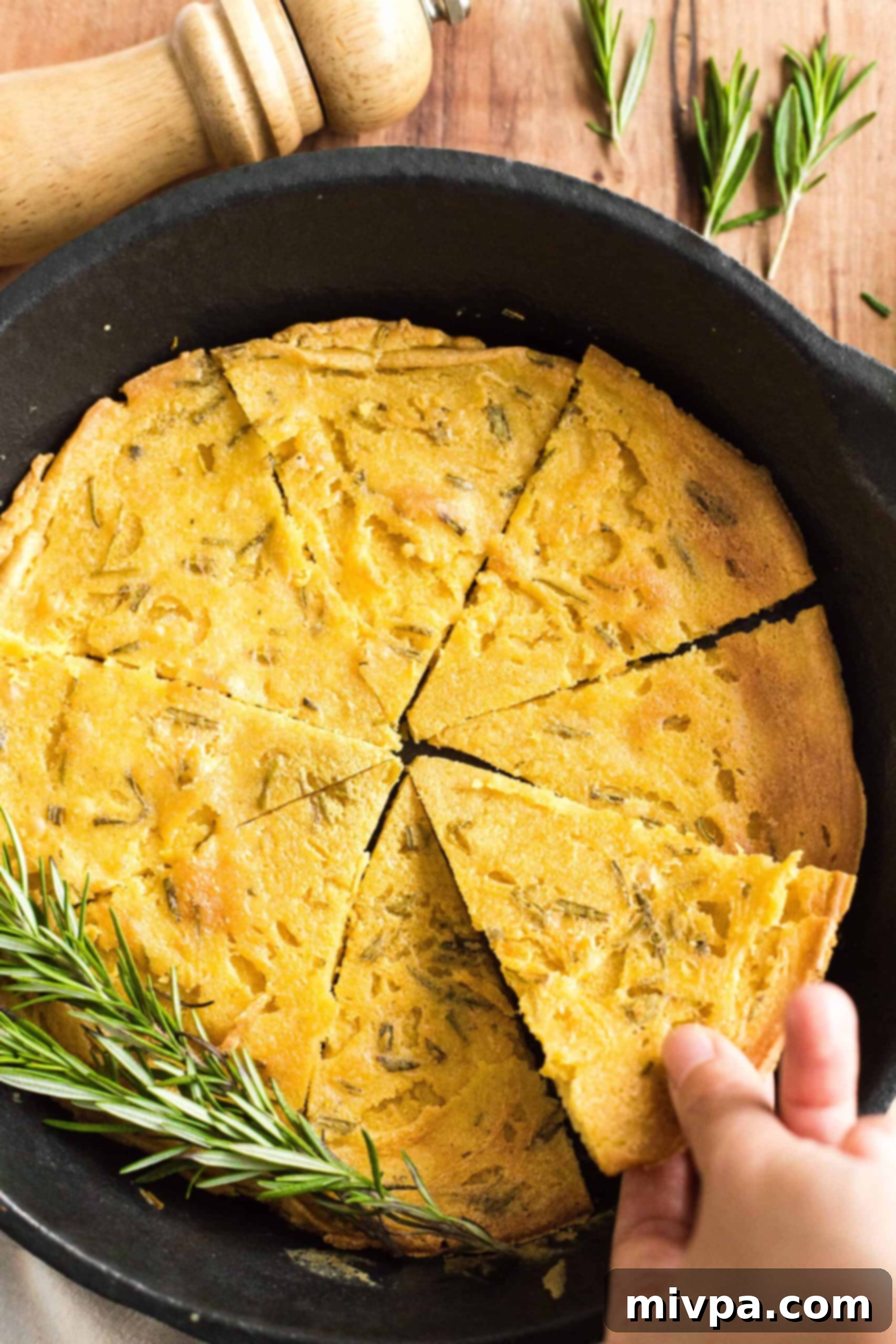Crispy & Creamy Farinata: Your Easy Gluten-Free and Vegan Chickpea Flatbread Recipe
Prepare to fall in love with farinata! This incredibly easy recipe transforms simple chickpea flour into a culinary marvel: a flatbread that’s unbelievably crispy and golden brown on the outside, yet wonderfully creamy and impossibly delicious in the middle. Also known by delightful names like torta de ceci, cecina, faina, socca, or panisse, this chickpea flatbread is not only a breeze to prepare, ready in just about an hour, but it also makes the perfect appetizer, snack, or side dish. Best of all, it’s naturally gluten-free, dairy-free, and vegan, ensuring everyone at your table can indulge in its unique charm!
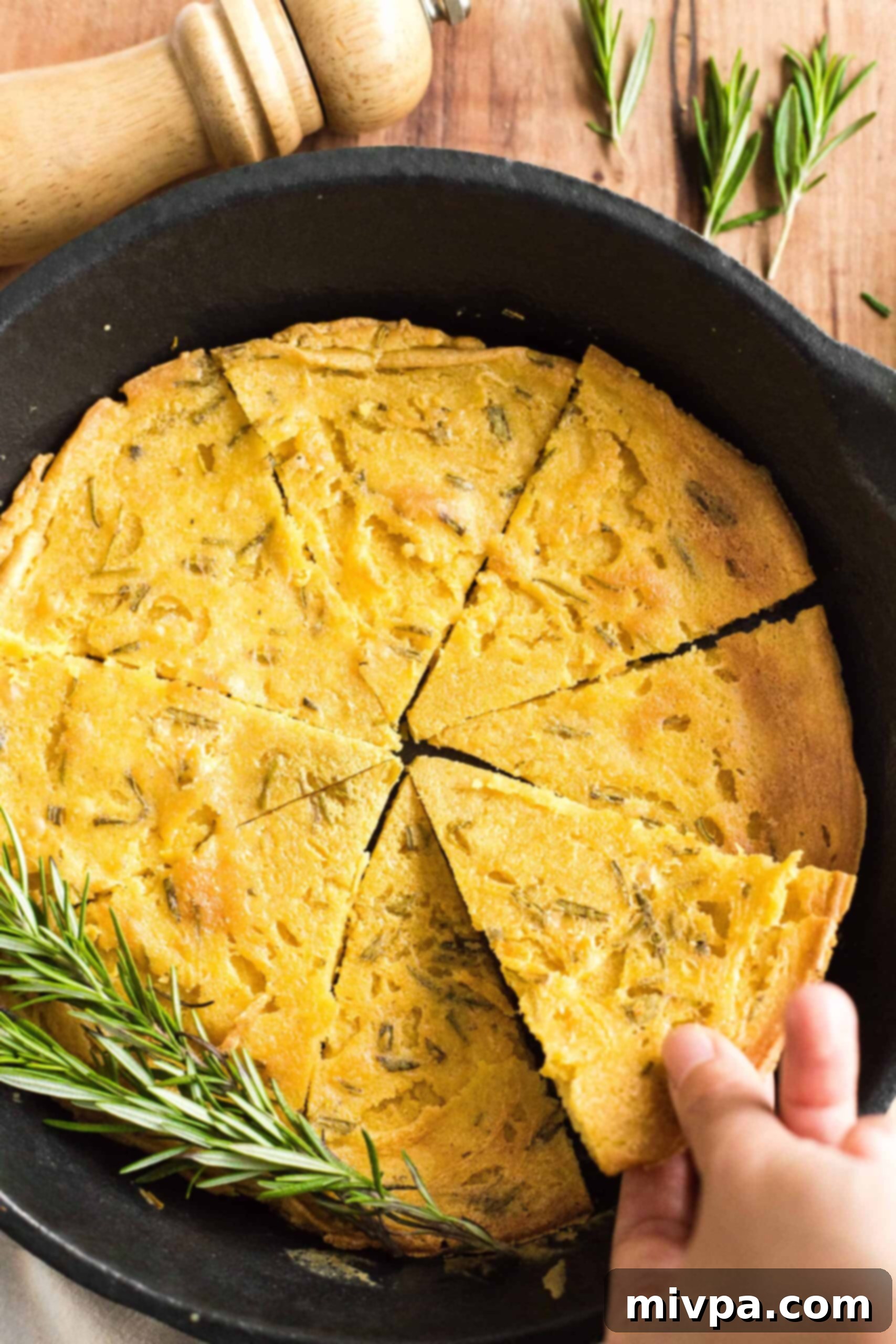
[feast_advanced_jump_to]
My Italian Culinary Journey & The Magic of Farinata
My connection with Italy runs deep, a passionate love affair that began with my first visit in 2008 with friends. That initial spark ignited an ongoing fascination, which was further fueled in 2014 when my husband Juan and I returned to explore the timeless allure of the Eternal City of Rome and embarked on a breathtaking road trip along the dramatic Amalfi Coast. While Italy’s stunning landscapes and rich history are undeniably captivating, it’s the country’s profound relationship with food that truly excites me.
In Italy, food isn’t just sustenance; it’s a central pillar of culture, family, and tradition. Every region boasts its own culinary treasures, each dish telling a story of heritage and local ingredients. While iconic pizza and pasta have rightly earned their global recognition, there’s a universe of less famous but equally incredible Italian foods deeply woven into the fabric of daily life. These are the regional specialties, often humble in origin but rich in flavor, that truly capture the heart of Italian cuisine. One such discovery, a delightful surprise that stole my heart, is farinata.
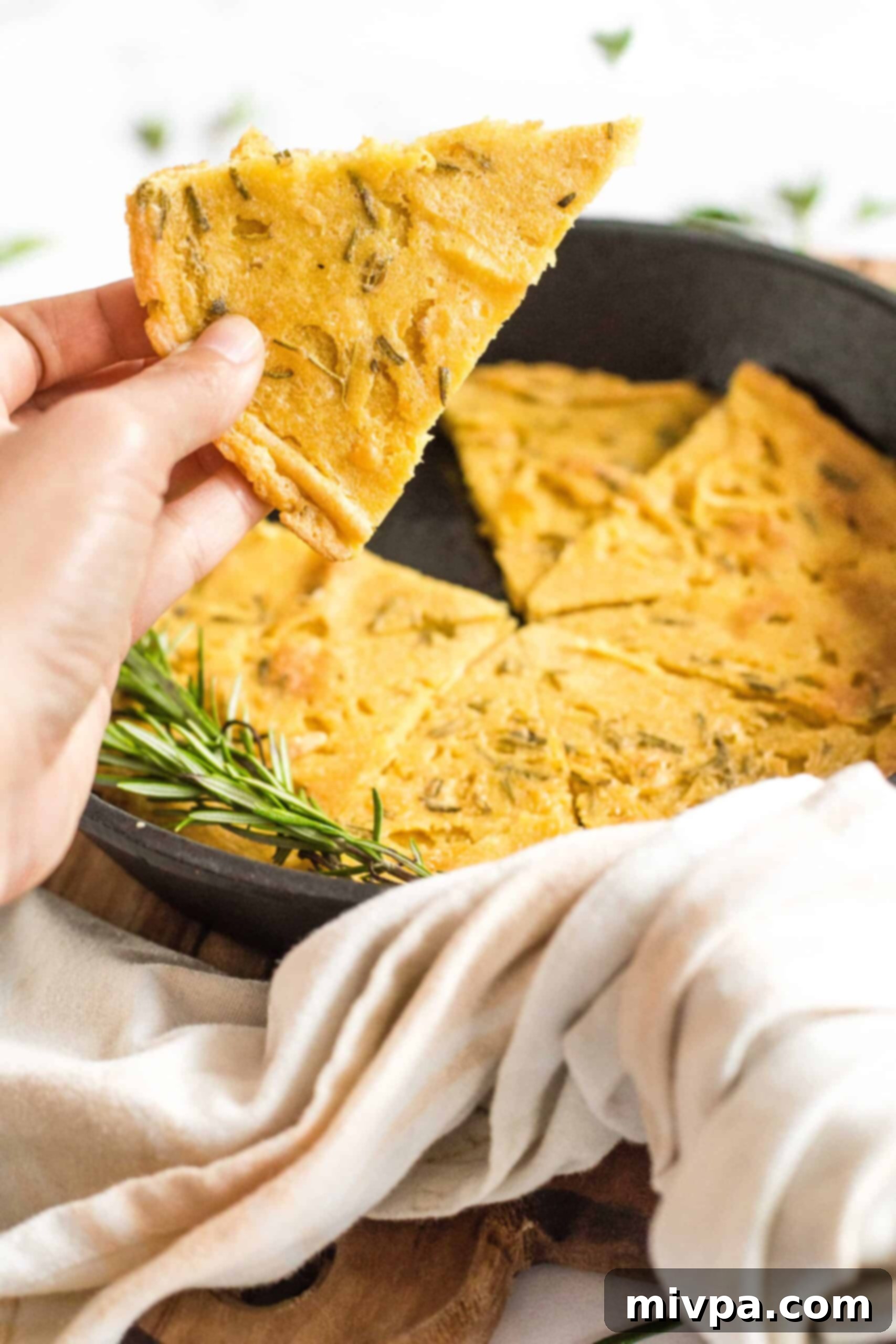
Unveiling Farinata: Italy’s Humble Chickpea Flatbread
My introduction to farinata came through Rachel’s insightful blog, where I happily delved into her archives while meticulously planning our 2014 Italian adventure. What I discovered was a revelation: a simple yet profoundly satisfying chickpea flatbread.
Farinata is a traditional, thin, unleavened pancake or flatbread, made from chickpea flour. Its origins trace back to Genoa in the picturesque region of Liguria, where it began as a humble food for the less privileged. Over time, its deliciousness and affordability propelled it into popularity, especially as a beloved street food along the south Tuscan coast and throughout Liguria. The beauty of farinata lies in its simplicity. It’s typically crafted from just five basic ingredients: chickpea flour, water, olive oil, salt, and pepper. This minimal ingredient list made it an incredibly accessible and nourishing snack for all social classes.
While often referred to as “farinata,” this delightful dish boasts a variety of regional names within Italy itself. In Tuscany, particularly around Pisa, it’s known as “cecina,” while in parts of Liguria and beyond, you might hear it called “torta de ceci” (chickpea cake). Regardless of the name, the essence remains the same: a naturally gluten-free, dairy-free, and vegan culinary treat.
The distinctive flavor of farinata largely comes from its star ingredient: chickpea flour. This gives it a unique, earthy, and slightly nutty taste. For some, this flavor profile might be quite strong, but if you’re a fan of hummus – essentially pureed chickpeas – then I’m confident you’ll appreciate the deliciousness of farinata. Its crisp exterior and soft, creamy interior offer a textural experience that is truly unforgettable.
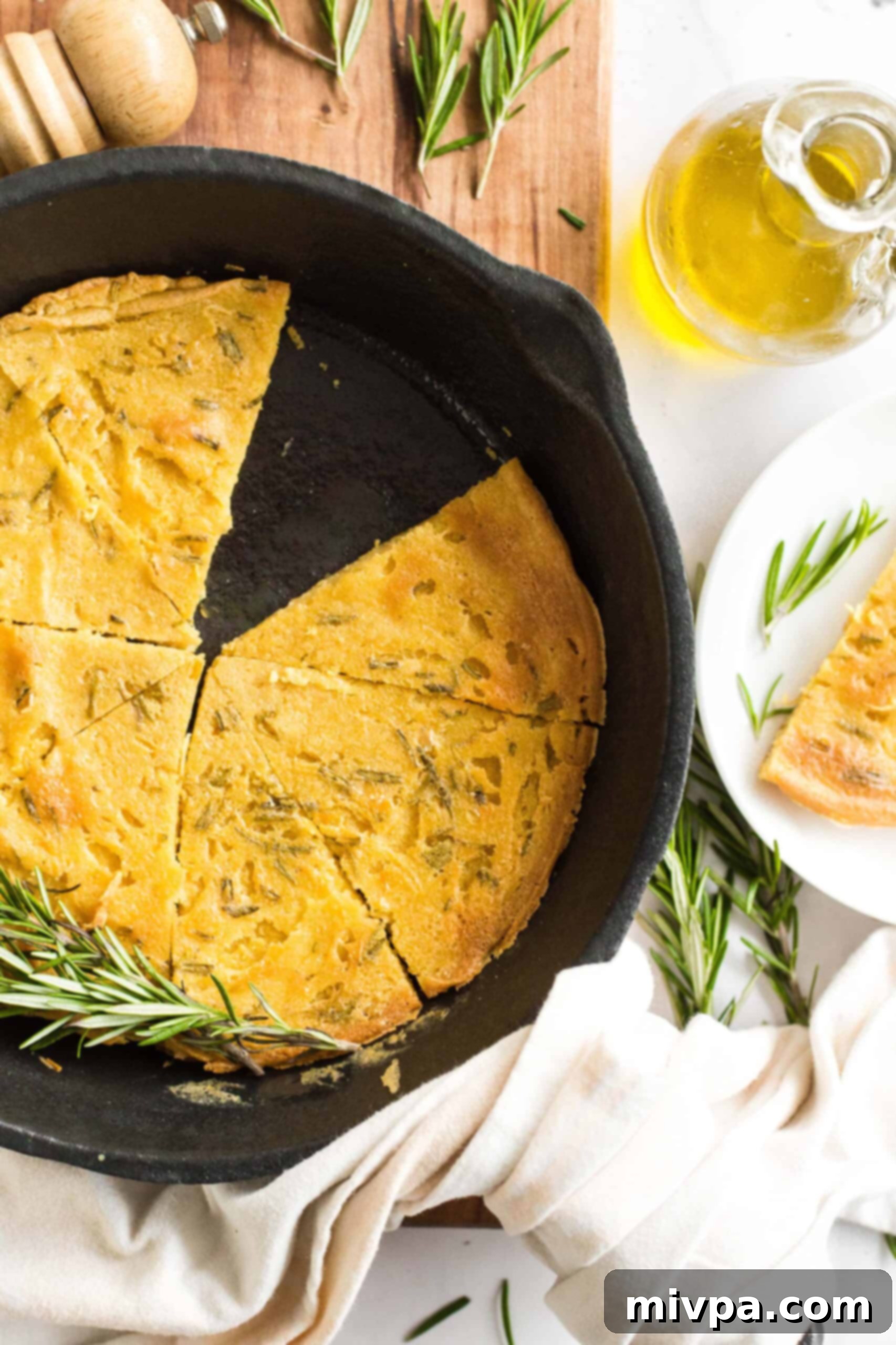
Global Cousins: Exploring Farinata’s International Variations
The concept of a savory flatbread made from chickpea flour isn’t exclusive to Italy; it’s a culinary idea that has resonated across various cultures and continents, often using very similar ingredients. These international counterparts demonstrate the universal appeal of this simple, wholesome preparation.
In France, particularly in the southeastern regions like Nice, farinata finds its closest relative in “socca.” Socca is a thin, crispy pancake, cooked in a large copper pan over a wood fire and often served piping hot from street vendors. It’s a staple of Niçoise cuisine, enjoyed with a generous sprinkle of black pepper, much like its Italian cousin. Further west, in Marseille, you’ll find “panisse.” While also made from chickpea flour, panisse takes on a different form. The chickpea batter is cooked into a thick paste, cooled, then cut into various shapes (often squares or rounds) and fried until golden and crispy. It’s frequently served as an appetizer or side dish, offering a delightful textural contrast with its soft interior and crunchy exterior.
Across the Atlantic, in Argentina, a popular version known as “faina” is widely enjoyed. This variant is uniquely served and eaten alongside pizza, often placed on top of a slice, creating a delicious combination of textures and flavors. This practice highlights the versatility of chickpea flatbread, transforming it from a standalone snack into a complementary component of a larger meal. These global variations underscore the enduring appeal and adaptability of chickpea flour, showcasing how a few basic ingredients can lead to such diverse and beloved dishes worldwide.
Savoring Farinata: Serving Suggestions & Pairing Ideas
Farinata is surprisingly hearty and incredibly versatile, making it suitable for a variety of meal occasions. Its filling nature means it can easily transition from a light appetizer to a satisfying full meal, depending on how you choose to serve it.
I personally find this chickpea farinata utterly irresistible when enjoyed simply as an appetizer, fresh out of the oven, sprinkled generously with freshly ground black pepper and an extra pinch of sea salt. The simplicity allows the unique chickpea flavor and the delightful crispy-creamy texture to shine through.
However, don’t limit yourself! Farinata makes an excellent base for various toppings. Consider serving it alongside a vibrant mixed green salad for a light lunch. For a more substantial meal, it pairs beautifully with roasted vegetables like bell peppers, zucchini, or cherry tomatoes, which add a burst of freshness and color. You could also get creative with spreads – a dollop of pesto, a spoonful of rich tomato tapenade, or even a sprinkle of chopped fresh herbs like thyme or oregano can elevate its flavor. In some regions, farinata is served with soft cheeses or cured meats, though for a strictly vegan option, plant-based cheeses or a sprinkle of nutritional yeast can add a savory depth. The possibilities are truly endless, allowing you to customize your farinata experience to suit any taste or occasion.
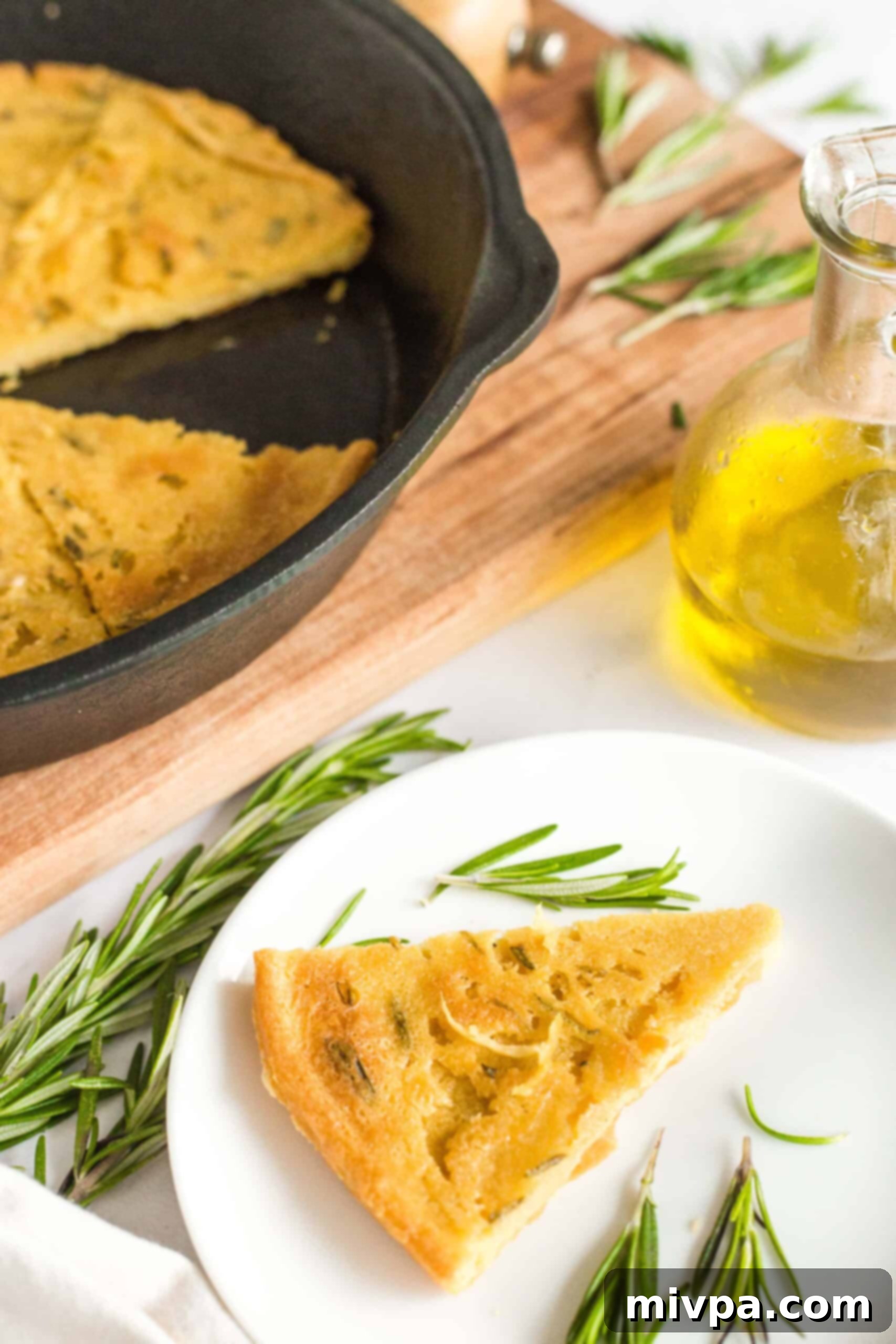
Why This Farinata Recipe is a Must-Try:
This farinata recipe is more than just a dish; it’s a testament to how simple ingredients can create extraordinary flavors and textures. Here’s why it deserves a permanent spot in your culinary rotation:
- Effortlessly Simple & Quick: With just a handful of pantry staples and minimal preparation, this recipe comes together in approximately an hour, making it an ideal choice for a last-minute appetizer, a quick snack, or a delightful side dish. It’s a testament to the beauty of uncomplicated cooking.
- Irresistible Texture & Flavor: The magic happens in the oven: the edges crisp up to a perfect golden-brown crust, while the interior remains wonderfully soft and creamy. This delightful contrast in textures, combined with the savory, earthy taste of chickpeas and aromatic rosemary, creates an incredibly addictive experience you’ll crave again and again.
- Dietary Inclusivity for All: One of the greatest advantages of farinata is its natural composition. It’s inherently gluten-free, dairy-free, and vegan. This makes it a fantastic option for those with celiac disease, gluten intolerance, lactose intolerance, or anyone following a plant-based diet. Everyone can enjoy this delicious treat without compromise!
- Versatile Culinary Canvas: While delicious on its own, farinata is also a fantastic base for creativity. Its mild yet distinct flavor welcomes a variety of toppings, from fresh herbs and spices to roasted vegetables or your favorite dips, making it adaptable to any palate or occasion.
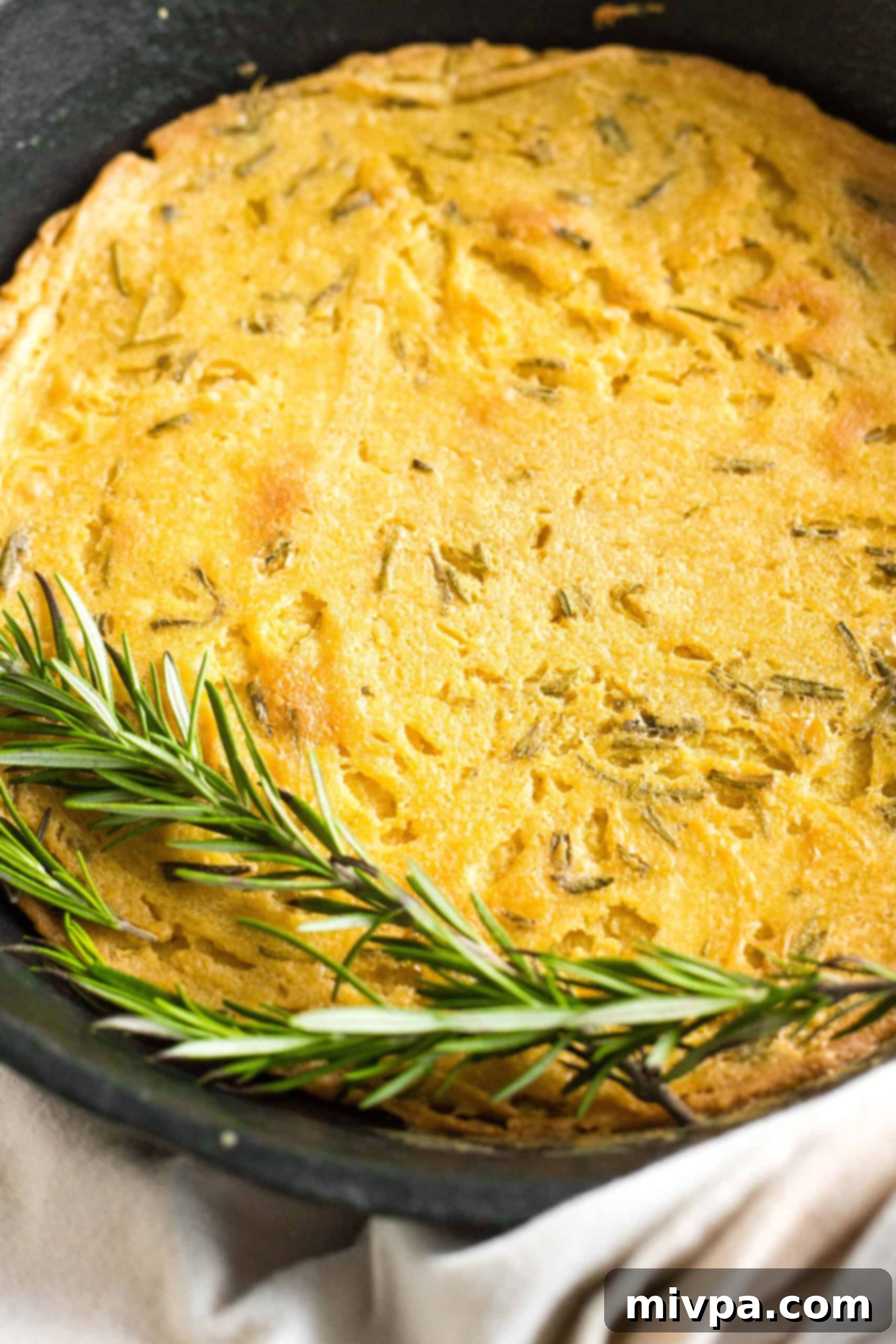
Essential Ingredients You’ll Need:
Creating this delicious farinata requires just a few basic ingredients, most of which you likely already have in your pantry. The simplicity of the components belies the incredible flavor they produce when combined. Here’s a visual overview of the key players:

Diving Deeper: Ingredient Notes & Smart Substitutions:
While the ingredients are few, understanding their role can make all the difference in perfecting your farinata. Here are some detailed notes and potential substitutions:
- Chickpea Flour (Garbanzo Bean Flour): This is the undeniable star and main ingredient of our chickpea flatbread. Its unique protein structure gives farinata its distinct creamy texture and savory flavor. For this reason, I strongly advise against substituting chickpea flour with other flours, as the results would be entirely different and not truly farinata. Look for it in the baking aisle or international foods section of your grocery store, or easily order it online.
- Warm Water: The temperature of the water plays a crucial role. Using warm (not hot!) water helps the chickpea flour dissolve more efficiently, preventing lumps and creating a smooth, homogenous batter. This ensures a consistent texture in your finished flatbread.
- Rosemary: Fresh rosemary adds a wonderful, aromatic, and distinctly Mediterranean flavor that complements the earthy chickpea flour beautifully. If fresh rosemary isn’t available, you can use dried rosemary. As dried herbs are generally more potent, use about 1/2 teaspoon of dried rosemary for this recipe. If rosemary isn’t to your taste, you can certainly omit it or experiment with other fresh herbs like finely chopped thyme or oregano.
- Extra Virgin Olive Oil: High-quality extra virgin olive oil is key to farinata’s authentic flavor and its beautiful crispiness. It imparts a fruity, peppery note that is simply unmatched. While I highly recommend it for the best taste, if you don’t have olive oil, you may substitute it with other high-smoke point oils such as avocado oil, though the flavor profile will be slightly different.
- Salt and Freshly Ground Black Pepper: These seasonings are vital for enhancing the overall flavor. Salt brings out the best in the chickpea flour, and freshly ground black pepper adds a delightful warmth and subtle kick. Feel free to adjust the pepper to your personal preference – omit it if you prefer no heat, or add more for an extra zing.
- Cast Iron Skillet: The choice of cooking vessel is more important than you might think. I highly recommend using a well-seasoned cast iron skillet. Its ability to retain and distribute heat evenly is crucial for achieving that characteristic crispy bottom and golden-brown top that makes farinata so special. If a cast iron skillet isn’t available, a sturdy, rimmed baking sheet can also be used, but ensure it gets adequately hot in the oven before adding the batter for optimal crispiness.
How to Make Farinata (Step by Step):
Creating this authentic farinata is a straightforward process, but a few key steps ensure perfect results every time. Follow these instructions carefully for a crispy, creamy chickpea flatbread that will impress:
1. Mix Flour, Salt and Water
In a large mixing bowl, whisk together the chickpea flour, salt, and warm water until you achieve a smooth, pale yellow batter without any lumps. It should be quite thin. Cover the bowl tightly with plastic wrap or a plate and allow the batter to rest at room temperature for at least 30 minutes. This resting period is crucial as it allows the chickpea flour to fully hydrate, resulting in a smoother, more flavorful farinata.
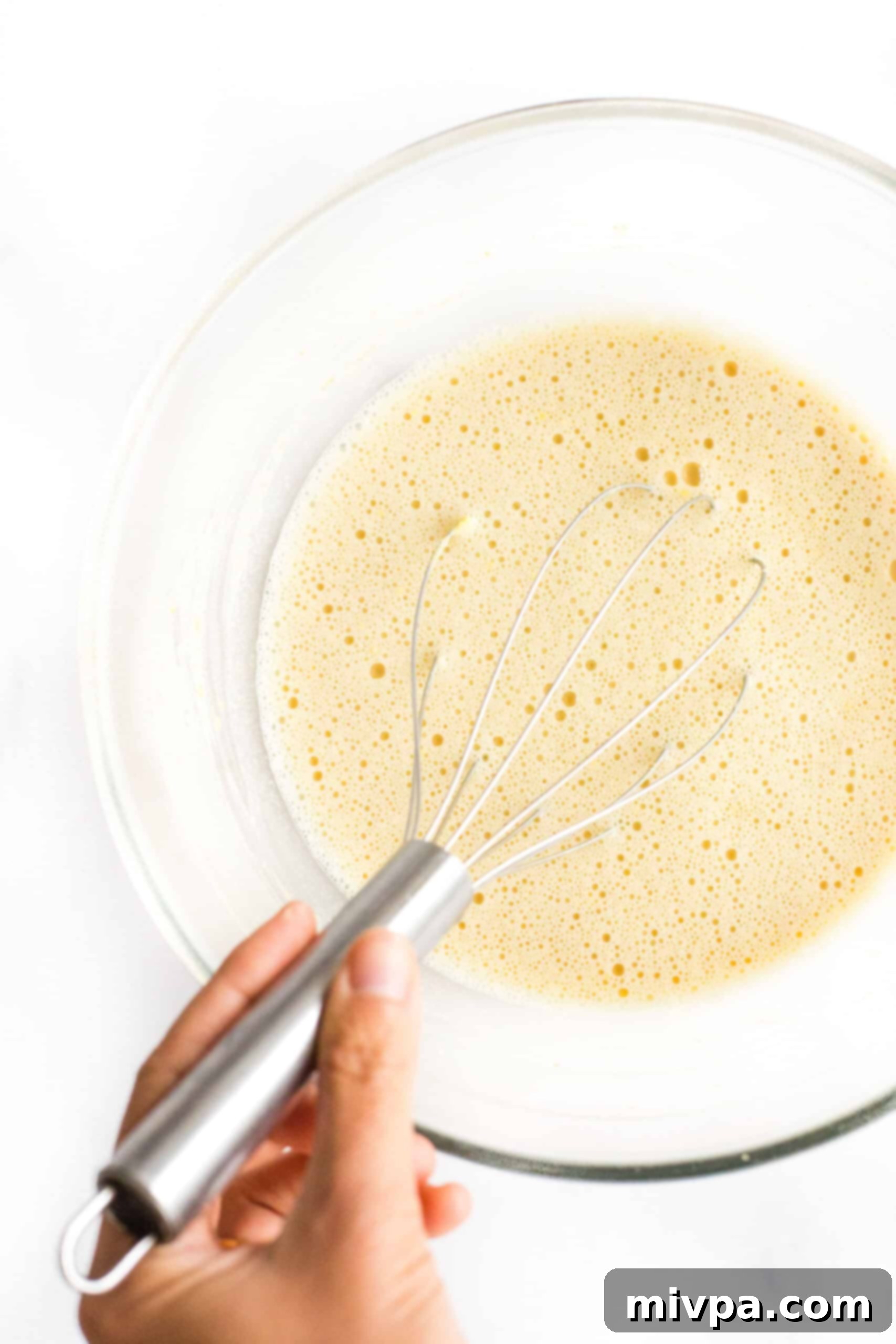
2. Remove Foam
After the batter has rested, you may notice a layer of foam on the surface. Use a spoon or a small ladle to gently skim off and discard as much of this foam as possible. Removing the foam helps ensure a smoother, more even surface on your baked farinata.
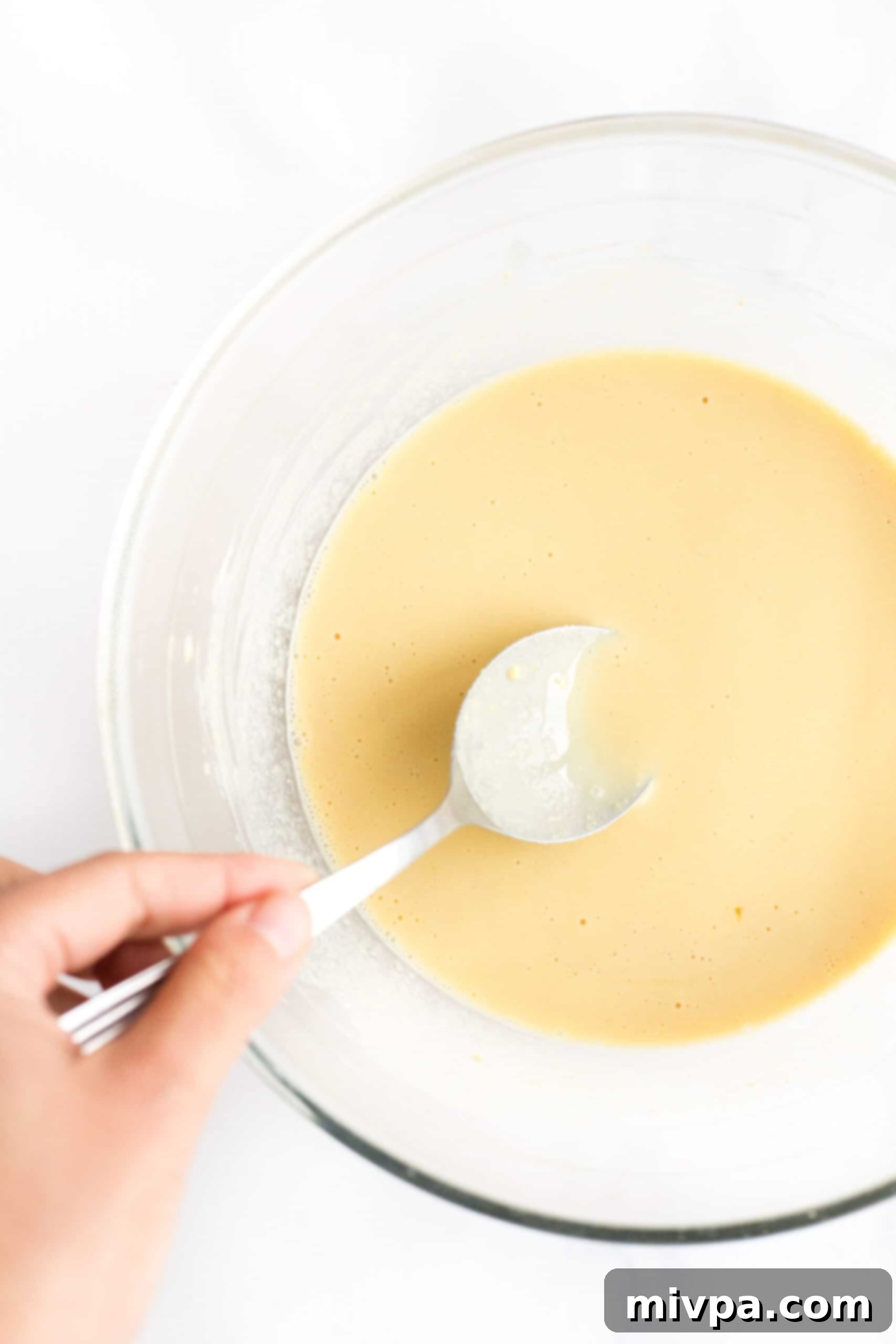
3. Add Oil and Rosemary
Once the resting period is complete and the foam has been removed, whisk in 2 tablespoons of the extra virgin olive oil and the minced fresh rosemary into the chickpea batter. Continue whisking until the oil and rosemary are well incorporated, creating a fragrant and liquid yellow mixture.
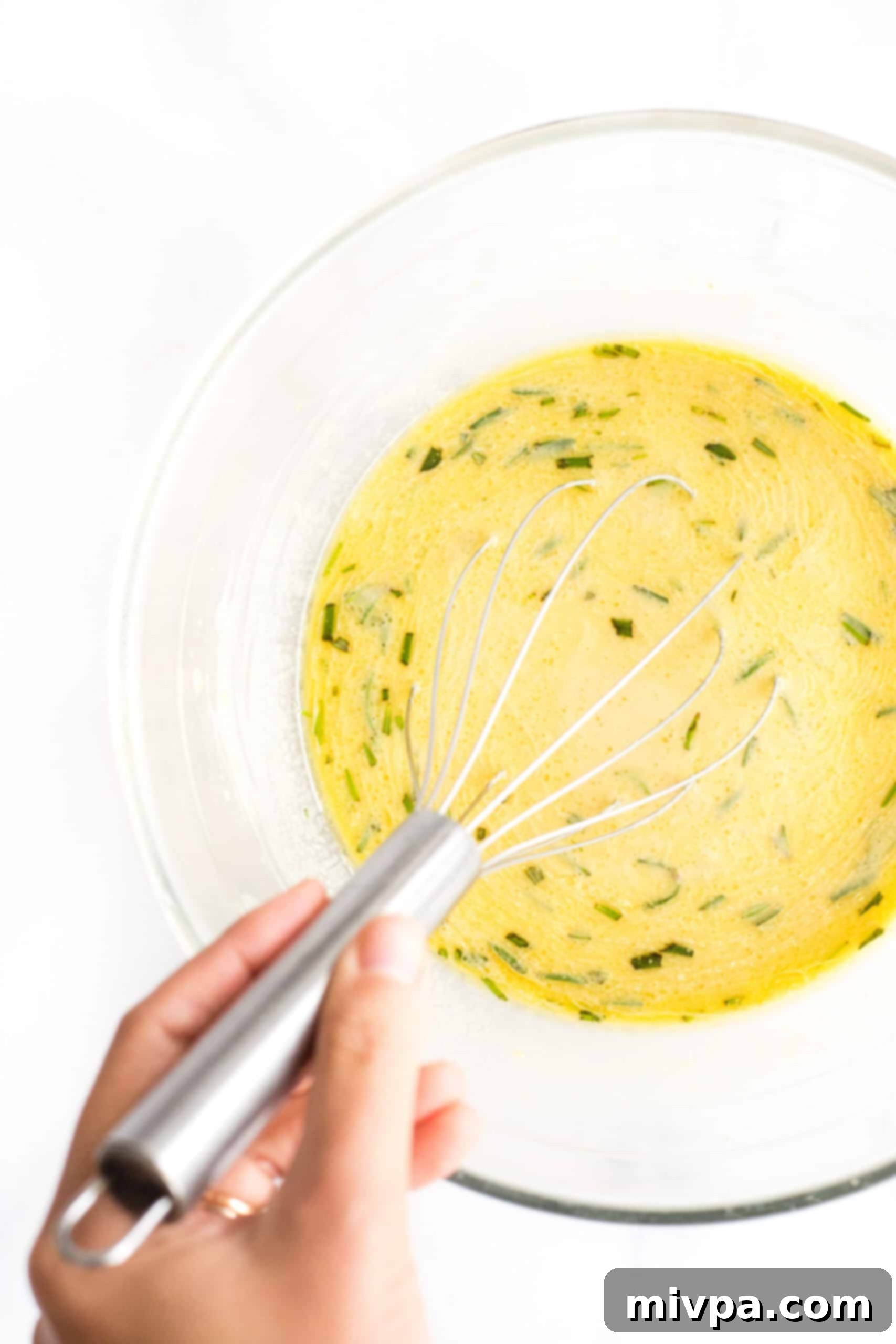
4. Preheat Oven and Heat Skillet
While your batter is resting, preheat your oven to a high temperature of 500F (260C). Critically, place a standard 10-inch cast iron skillet (or your chosen baking vessel) into the oven as it preheats. The goal is to get the skillet smoking hot. This initial extreme heat is essential for creating that perfect crispy crust on your farinata.
5. Heat Oil in Skillet
Carefully remove the smoking hot cast iron skillet from the oven (use oven mitts!). Pour the remaining 3 tablespoons of extra virgin olive oil into the skillet. Swirl the skillet immediately to ensure the hot oil evenly coats the entire surface and sides. Return the skillet with the oil to the hot oven for a few minutes, just until the oil begins to shimmer. This step ensures an impossibly crispy base for your farinata.

6. Transfer Batter to Skillet
Working quickly and carefully, pour the prepared chickpea batter into the shimmering hot oil in the cast iron skillet. The batter should sizzle immediately upon contact. Promptly return the skillet to the preheated oven. Speed here helps maintain the skillet’s temperature for optimal crisping.

7. Bake Till Crispy and Golden
Bake the farinata for approximately 30 to 35 minutes. Keep an eye on it – you’re looking for a beautiful golden-brown color and a visibly crispy, slightly blistered top. The edges should be wonderfully firm and crunchy. If it’s not quite crispy enough after 35 minutes, you can continue baking for a few more minutes, or even finish it under the broiler for a minute or two (watch carefully to prevent burning!).
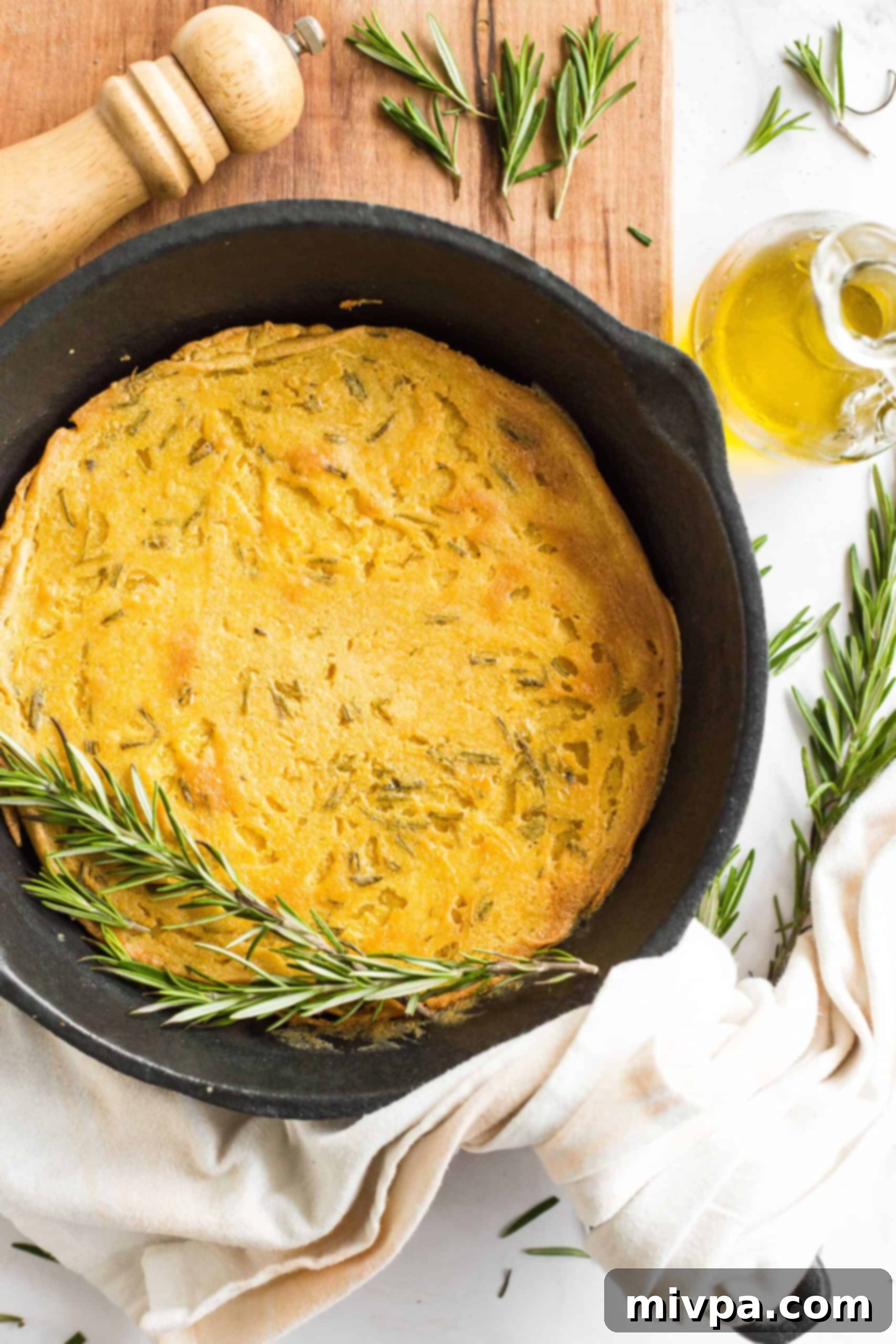
8. Cut into Wedges and Enjoy
Once baked to perfection, carefully remove the skillet from the oven. Allow the farinata to cool slightly in the pan for a few minutes before cutting it into wedges, much like a pizza. Serve your crispy, creamy farinata hot, garnished with a final sprinkle of fresh rosemary or a dash of black pepper if desired. Enjoy this delightful Italian classic!
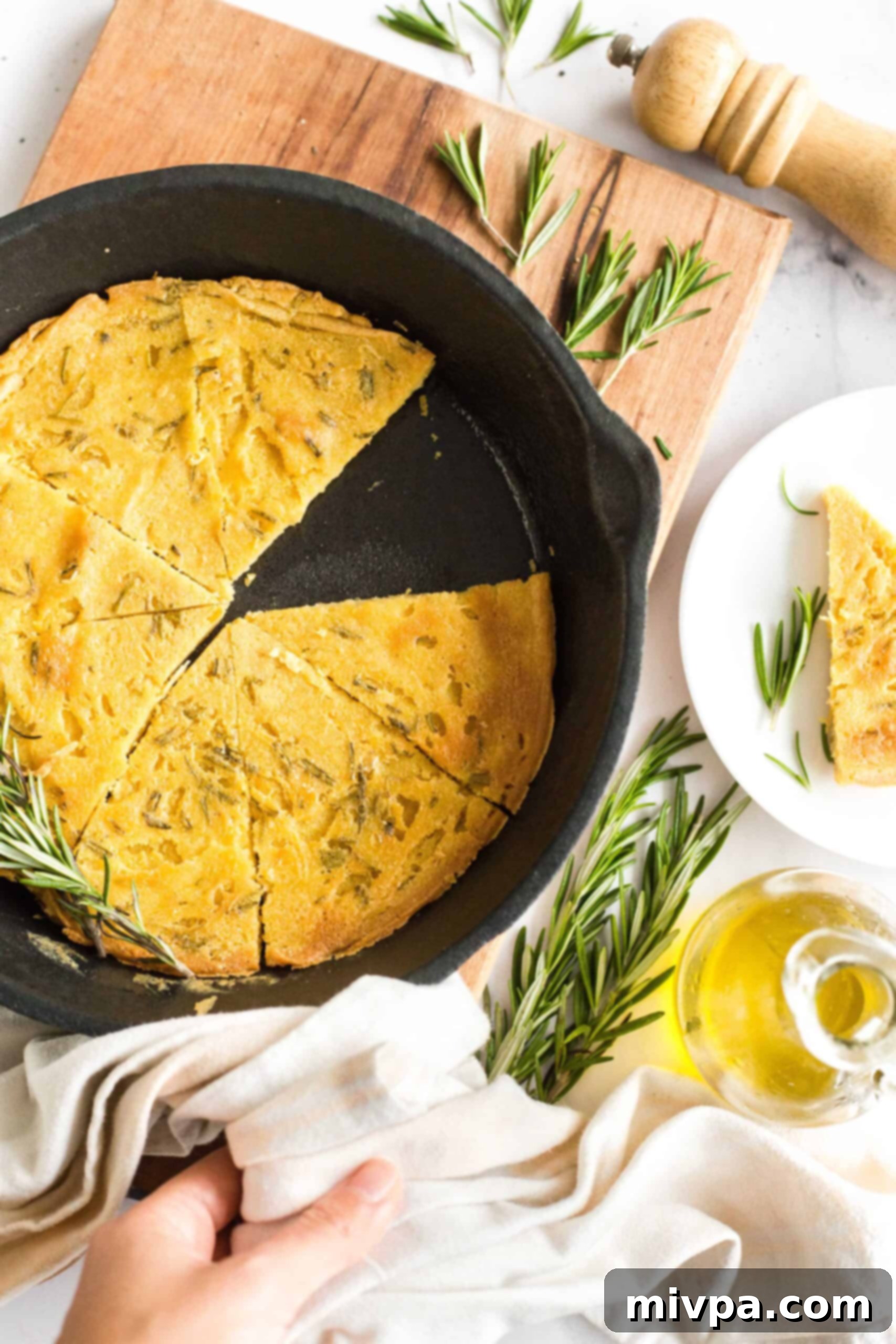
Pro Tips for Farinata Perfection:
Achieving the perfect farinata is easy with a few insider tricks. Keep these in mind to ensure your chickpea flatbread is always a resounding success:
- Embrace the Crispiness: Farinata is truly at its best when it’s wonderfully crispy, almost crackly, on the outside. Don’t be afraid to let it bake until it achieves a deep golden-brown color and feels firm and crusty to the touch. If your oven tends to cook unevenly, rotate the skillet halfway through baking. For an extra boost of crispiness, you can place it under a broiler for 1-2 minutes at the very end, but watch it like a hawk as it can burn quickly!
- Thinner is Often Better: The ideal farinata has a delicate balance between a super crispy crust and a tender, creamy interior. Generally, a thinner farinata will yield a crispier result. The thickness will depend on the size of your cast iron skillet or baking sheet. If you’re using a smaller skillet (e.g., 8-inch), your farinata will be thicker. For a thinner, crispier flatbread, consider using a larger skillet (10-12 inches) or reducing the recipe proportionally if you only have a smaller pan.
- Don’t Rush the Resting Time: The 30-minute resting period for the batter is not just a suggestion; it’s a crucial step. It allows the chickpea flour to fully absorb the water, which results in a smoother batter, a better texture, and prevents a “gummy” interior in the finished product.
- Hot Skillet, Hot Oil: This cannot be stressed enough! A smoking hot skillet and shimmering hot oil are the secrets to that characteristic crispy, golden crust that defines excellent farinata. Make sure your oven is fully preheated and the skillet has had ample time to get screaming hot before adding the oil and then the batter.
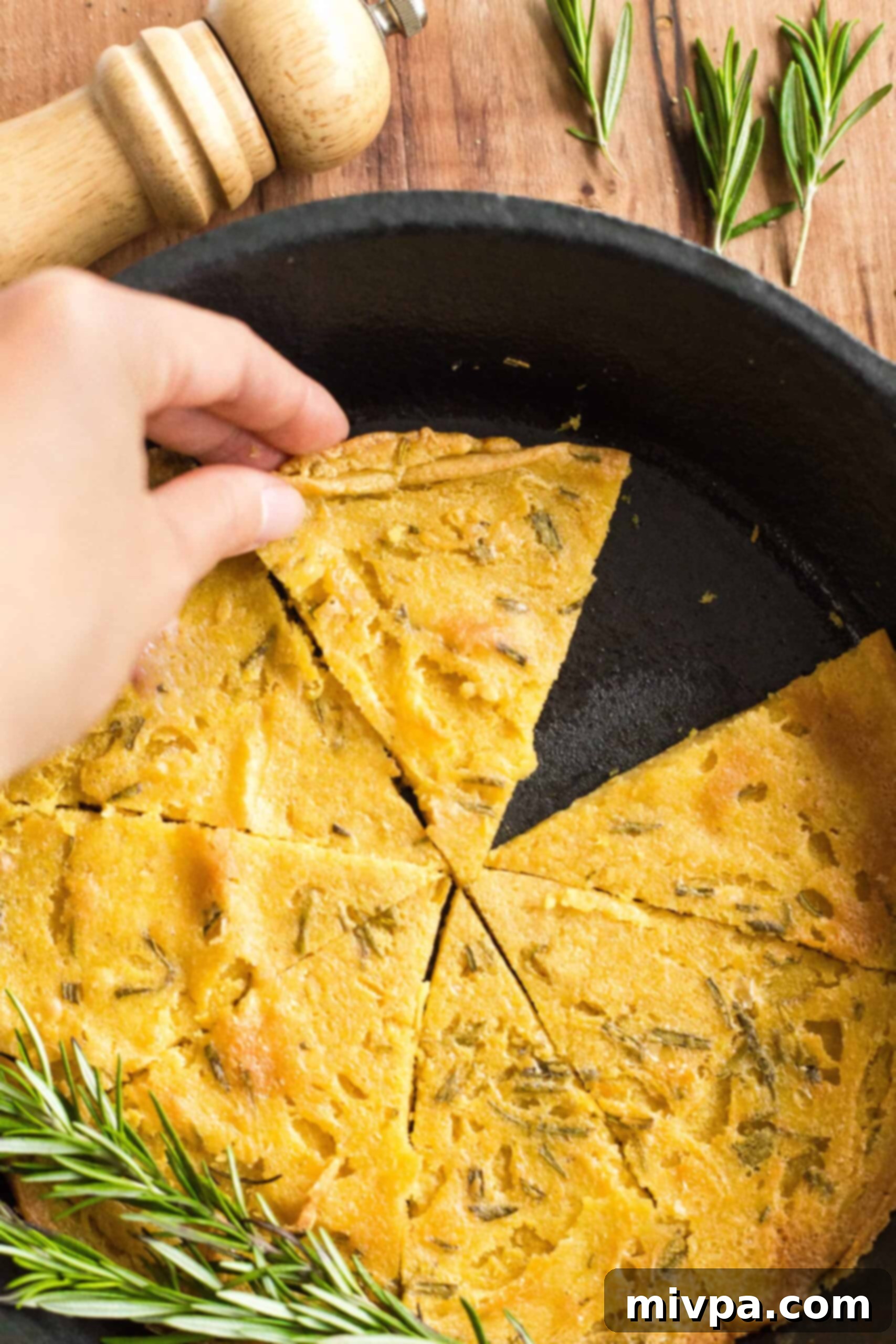
Recipe FAQs:
To store any leftover farinata, allow it to cool completely to room temperature. Then, place the slices or wedges in an airtight container. It will keep well in the refrigerator for up to 1 week. For best results when reheating, place it back in the oven at 400F (200C) for about 5-7 minutes, or until warmed through and crispy again. Avoid the microwave, as it will make the farinata soft and lose its signature crispiness.
Absolutely! Farinata freezes beautifully. Once it has completely cooled, wrap individual slices tightly in plastic wrap, then place them in a freezer-safe container or a heavy-duty ziplock bag. It can be frozen for up to 3 months. When you’re ready to enjoy it, you can reheat it directly from frozen in the oven. Preheat your oven to 400F (200C) and bake for 10-15 minutes, or until hot and crispy. Again, the oven is your best friend for reheating frozen farinata to restore its delicious texture.
Yes, farinata is incredibly adaptable! While rosemary is classic, you can experiment with other herbs like thyme, oregano, or a mix of Italian herbs. Finely chopped onions or scallions can be added to the batter for extra flavor. For a spicy kick, a pinch of red pepper flakes is a great addition. You can also sprinkle coarse sea salt or flaky salt on top before baking for added crunch and flavor.
Look for “chickpea flour,” “garbanzo bean flour,” or “gram flour” (besan in Indian markets). All of these are essentially the same and will work perfectly for this recipe. Ensure it’s plain chickpea flour, not a blend, for the best results and authentic flavor.
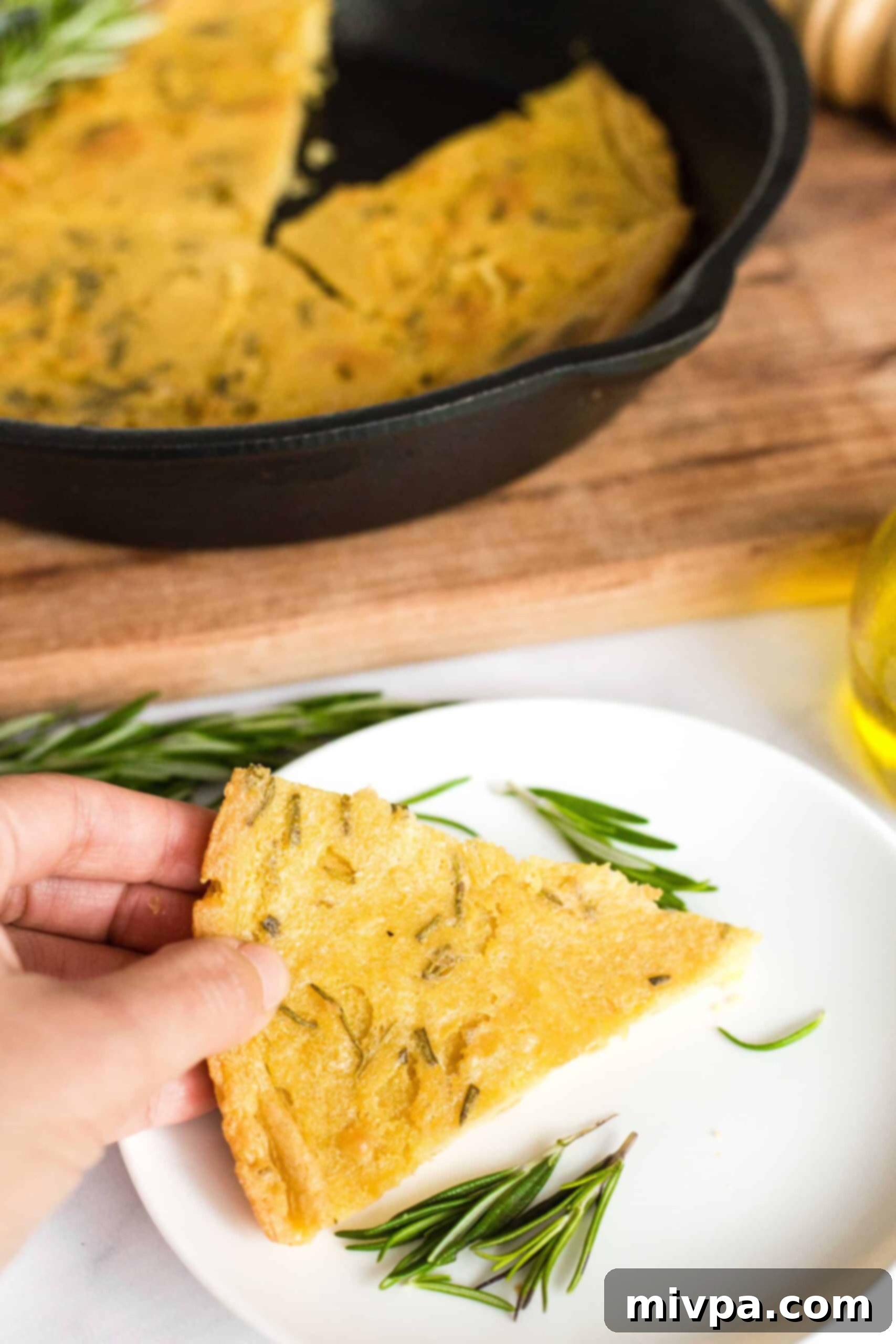
More Italian Delights & Chickpea Creations to Explore:
If you’ve enjoyed this taste of Italy and the versatility of chickpeas, you’ll love these other recipes:
Other Italian Recipes You’ll Enjoy:
- Easy Homemade Grissini (Italian Breadsticks)
- Roasted Artichokes
- Easy Pumpkin Gnocchi (Gluten-Free)
- Creamy Pumpkin Risotto (Gluten-Free)
Chickpea Recipes You’ll Love:
- Crispy Air Fryer Chickpeas (Gluten-Free, Vegan)
- Chickpea Flour Chocolate Chunk Cookies (Gluten-Free, Vegan)
- Easy Chickpea Curry (Gluten-Free, Vegan)
Appetizer Recipes to Indulge In:
Looking for more delicious ways to start your meal or enjoy a light bite? Explore these fantastic appetizer recipes:
- Easy Chicken Satay with Peanut Sauce (Gluten-Free, Dairy-Free)
- Crispy Cornflake Chicken Strips (Gluten-Free, Dairy-Free)
- Caprese Pesto Pasta Salad (Gluten-Free)
- Crunchy Cabbage Salad with Peanut Dressing (Gluten-Free, Vegan)
P.S. If you try this recipe, I’d love for you to leave a star rating below, and/or a review in the comment section further down the page. I always appreciate your feedback. Be sure to check out my entire Recipe Index for all the recipes on the blog. You can also follow me on Pinterest, Facebook or Instagram! Sign up for my Email List to get fresh recipes in your inbox each week!
Print
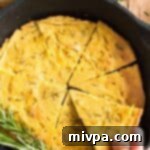
Easy Farinata Recipe – Chickpea Flatbread (Gluten-Free, Vegan)
5 Stars 4 Stars 3 Stars 2 Stars 1 Star
5 from 1 review
- Author: Felicia Lim
- Total Time: 1 hour 5 minutes
- Yield: 4 servings
- Diet: Gluten Free
Description
Crispy, golden brown and impossibly delicious, this easy farinata (also known as torta de ceci, cecina, faina or socca) is crazy easy to make, and is the perfect appetizer, snack or side dish. I know you’ll be making this chickpea flatbread on repeat, so keep the recipe handy! Naturally gluten-free, dairy-free, and vegan too, so everyone can indulge and enjoy!
Ingredients
Units
Scale
- 1 cup chickpea flour
- 1 1/3 cup warm water
- 1 teaspoon salt
- 1 teaspoon minced fresh rosemary
- 5 tablespoons extra virgin olive oil, divided
- Freshly ground black pepper, to taste
Instructions
- Mix Flour, Salt and Water: Whisk chickpea flour, salt, and warm water together in a large bowl to get a pale yellow batter. Cover the bowl with plastic wrap or a plate and let the batter stand for 30 minutes. This resting period is essential for proper hydration of the flour.
- Remove Foam: Use a spoon to carefully remove as much foam as possible from the surface of the rested batter. This helps ensure a smooth, even top on your finished farinata.
- Add Oil and Rosemary: Once the batter has rested and foam is removed, whisk in 2 tablespoons of the olive oil and the minced fresh rosemary until thoroughly combined, creating a fragrant, liquid yellow mixture.
- Preheat Oven & Skillet: While the batter is standing, preheat your oven to a high 500F (260C). Place a standard 10-inch cast iron skillet into the oven while it preheats to get it smoking hot. This extreme heat is crucial for a crispy crust.
- Heat Oil in Skillet: Carefully remove the smoking hot cast iron skillet from the oven. Pour the remaining 3 tablespoons of olive oil into the skillet and swirl it immediately to coat the entire surface. Return the skillet with the oil to the oven until the oil is hot and just begins to shimmer.
- Transfer Batter to Skillet: Working quickly and with caution, pour the chickpea batter directly into the hot oil in the skillet. It should sizzle immediately. Return the skillet promptly to the hot oven.
- Bake Till Crispy: Bake the farinata for approximately 30 to 35 minutes, or until it is beautifully golden brown, visibly crispy on top, and the edges are firm and crusty. Adjust baking time as needed for optimal crispiness.
- Cut into Wedges and Enjoy: Remove the skillet from the oven. Allow the farinata to cool slightly for a few minutes in the pan before carefully cutting it into wedges, much like a pizza. Serve hot and enjoy immediately!
Notes
Chickpea Flour: Since this is a chickpea flatbread recipe, chickpea flour is the main ingredient, and I do NOT recommend replacing it with other flours to maintain its authentic flavor and texture.
Warm Water: Use warm, not hot, water to ensure the chickpea flour dissolves thoroughly and creates a smooth batter, preventing lumps.
Rosemary: Fresh rosemary provides the best flavor. If using dried rosemary, use 1/2 teaspoon as its flavor is more concentrated. Feel free to omit if you’re not a fan of rosemary, or experiment with other fresh herbs like thyme or oregano.
Olive Oil: Extra virgin olive oil contributes significantly to the flavor and crispiness. If unavailable, a high-smoke point oil like avocado oil can be used, though the taste profile will differ slightly.
Pepper: Freshly ground black pepper adds a lovely warmth and subtle heat. Adjust to your taste, or omit if preferred.
Cast Iron Skillet: A cast iron skillet is highly recommended for its superior heat retention, ensuring a crispy bottom and top. A rimmed baking sheet can be used as an alternative, but may yield a slightly different texture.
Storing/Freezing: Store cooled farinata in an airtight container in the refrigerator for up to 1 week. Reheat in a 400F oven for 5 minutes. To freeze, wrap slices tightly and store in a freezer-safe bag for up to 3 months. Reheat from frozen in a 400F oven for 10-15 minutes.
This post was originally published in 2014, but has since been updated with better photographs, clearer step-by-step instructions, and improved writing. The recipe was also modified slightly to make a thinner batter for enhanced crispiness.
- Prep Time: 30 mins
- Cook Time: 35 mins
- Category: Bread
- Method: Baking
- Cuisine: Italian
